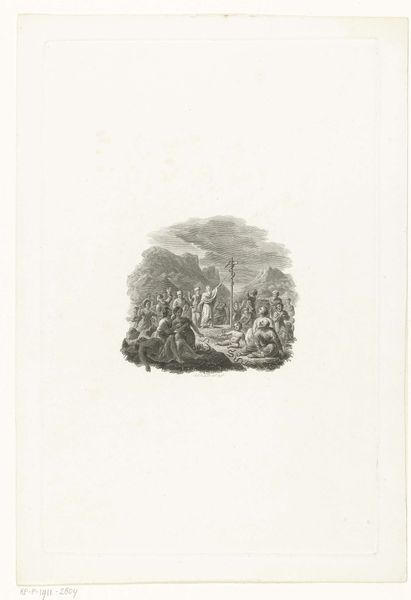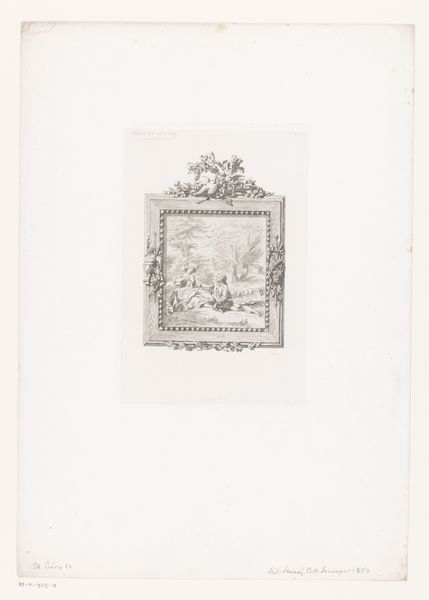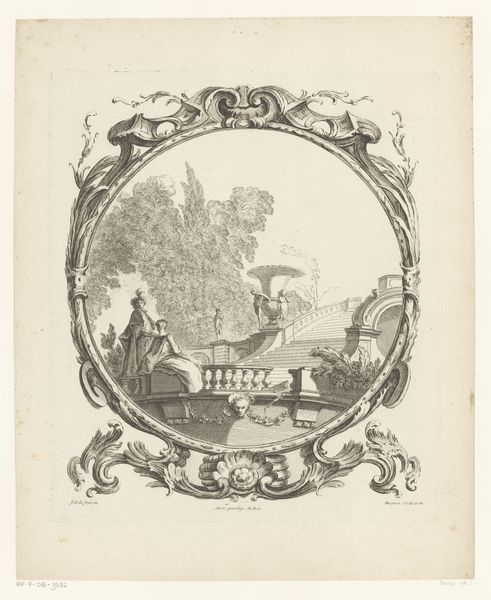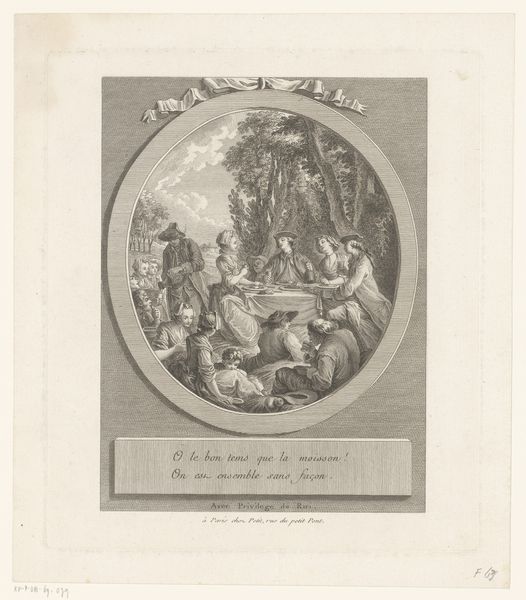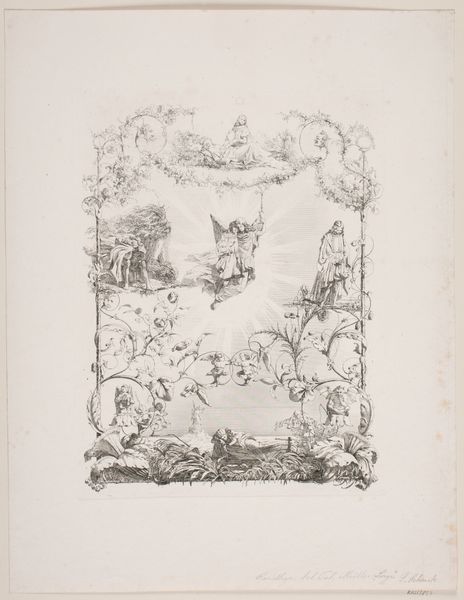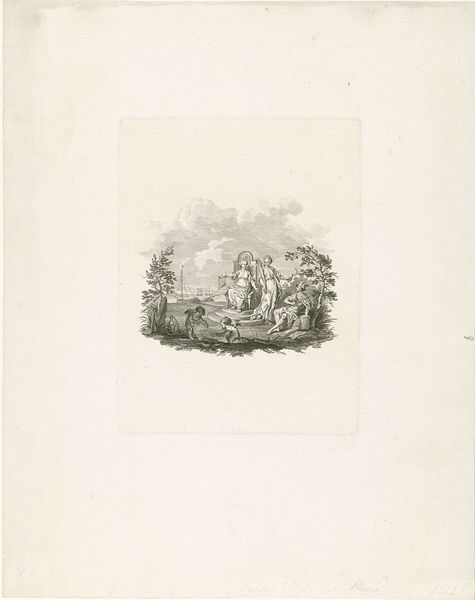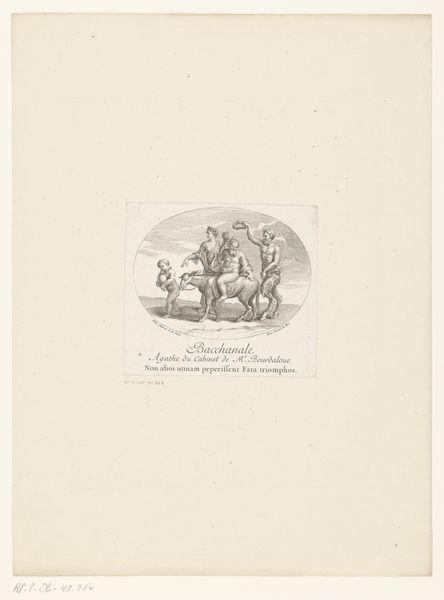
Dimensions: height 245 mm, width 220 mm
Copyright: Rijks Museum: Open Domain
Curator: This print by Charles Gavard, dating from between 1835 and 1871, depicts "The Taking of Stralsund, 1807," now held at the Rijksmuseum. What is your immediate reaction to this print? Editor: It strikes me as remarkably delicate, almost ethereal. The muted tones of the aged paper, combined with the fine lines of the engraving, create a sense of distance, both temporal and emotional. The figures seem caught in a moment both grand and fleeting. Curator: Yes, that distance is interesting. The event, the siege of Stralsund by Napoleon's forces, was quite brutal. Gavard, though, frames the historical narrative within an elaborate, decorative border, almost like a memory carefully preserved, softened by time. Editor: The border certainly plays an important role. Its ornamental nature contrasts sharply with the depiction of warfare within. Semiotically, it acts as a distancing mechanism, a way to contain and perhaps even aestheticize the violence. Curator: I see the border as symbolic, reflecting how history itself is often framed, curated, and sometimes even romanticized. Notice the subdued palette? There is very little tonal variation in the image which emphasizes how memories fade over time. It also speaks to cultural memory and how societies selectively remember and present their histories. Editor: Formally, the artist uses a fairly high vantage point, offering a comprehensive, almost detached view of the scene. The linear perspective guides the eye deep into the composition, creating depth despite the limited tonal range. Curator: Consider how academic art traditions can also create distance between a subject and a work’s impact or influence. Academic approaches create space and a specific frame for something, like Gavard’s print and a historical event. Do you think that dilutes a piece or makes its statements more profound? Editor: I would say the effect is more akin to an obscuration – the medium mediates the message and our viewing experience in perpetuity. And as time passes, its affect only solidifies. Thank you for your insight into this layered work! Curator: Thank you; I will contemplate how historical depictions continue to hold a place in contemporary discourse!
Comments
No comments
Be the first to comment and join the conversation on the ultimate creative platform.
